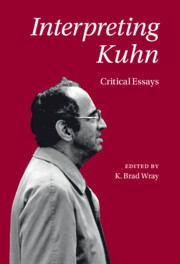Book contents
- Interpreting Kuhn
- Interpreting Kuhn
- Copyright page
- Dedication
- Contents
- Figures
- Contributors
- Acknowledgments
- Abbreviations
- Introduction
- Part I Foundational Issues
- Part II Three Core Concepts
- Chapter 5 Mop-Up Work
- Chapter 6 Kuhn and the Varieties of Incommensurability
- Chapter 7 Reassessing the Notion of a Kuhnian Revolution
- Part III Kuhnian Themes
- Bibliography
- Index
Chapter 7 - Reassessing the Notion of a Kuhnian Revolution
What Happened in Twentieth-Century Chemistry
from Part II - Three Core Concepts
Published online by Cambridge University Press: 25 June 2021
- Interpreting Kuhn
- Interpreting Kuhn
- Copyright page
- Dedication
- Contents
- Figures
- Contributors
- Acknowledgments
- Abbreviations
- Introduction
- Part I Foundational Issues
- Part II Three Core Concepts
- Chapter 5 Mop-Up Work
- Chapter 6 Kuhn and the Varieties of Incommensurability
- Chapter 7 Reassessing the Notion of a Kuhnian Revolution
- Part III Kuhnian Themes
- Bibliography
- Index
Summary
The chapter is concerned with Kuhnian revolutions in the way that they were originally conceived and also according to Kuhn’s later writings. In particular I analyze a recent proposal by Brad Wray that the switch from using atomic weight to order the elements, to using atomic number, represents a Kuhnian revolution either in the original and classic sense or in terms of a change in the scientific lexicon. The chapter also considers how the literature on the dual sense of the term ‘element’ bears on this discussion and the manner in which the discovery of isotopes of chemical elements were accommodated into the periodic table. Finally, Kuhn’s no overlap principle is examined. This is first carried out in the context in which Kuhn introduced the principle, to characterize how the meaning of the term planet changed in the course of the Copernican revolution. The no overlap principle is then applied to the change in the meaning of the term element which took place during Wray’s proposed atomic number revolution. I argue that the two historical cases are not analogous and that the element case cannot therefore be considered as a revolution in Kuhn’s revised lexical sense.
Keywords
- Type
- Chapter
- Information
- Interpreting KuhnCritical Essays, pp. 125 - 142Publisher: Cambridge University PressPrint publication year: 2021
- 2
- Cited by

